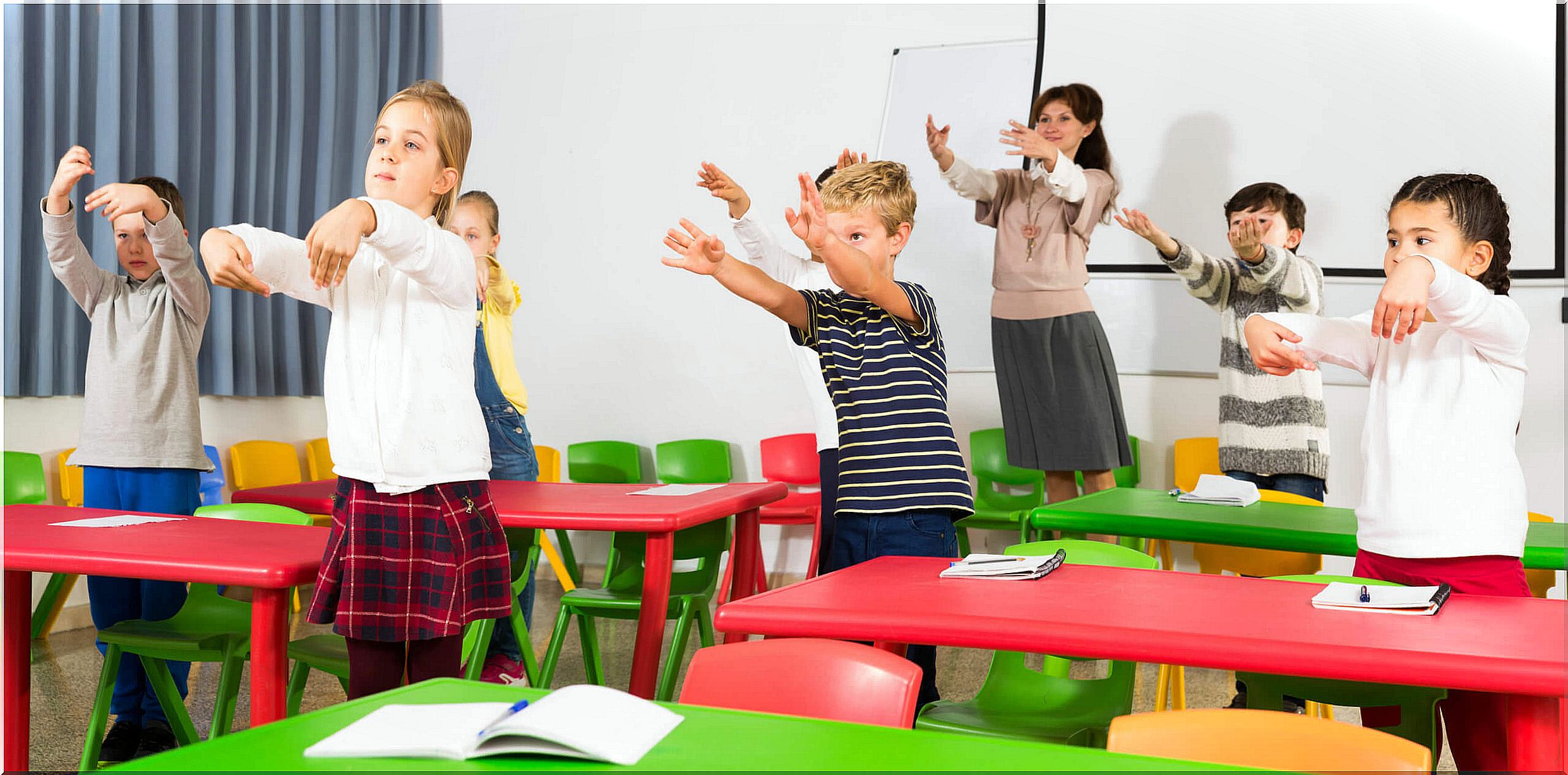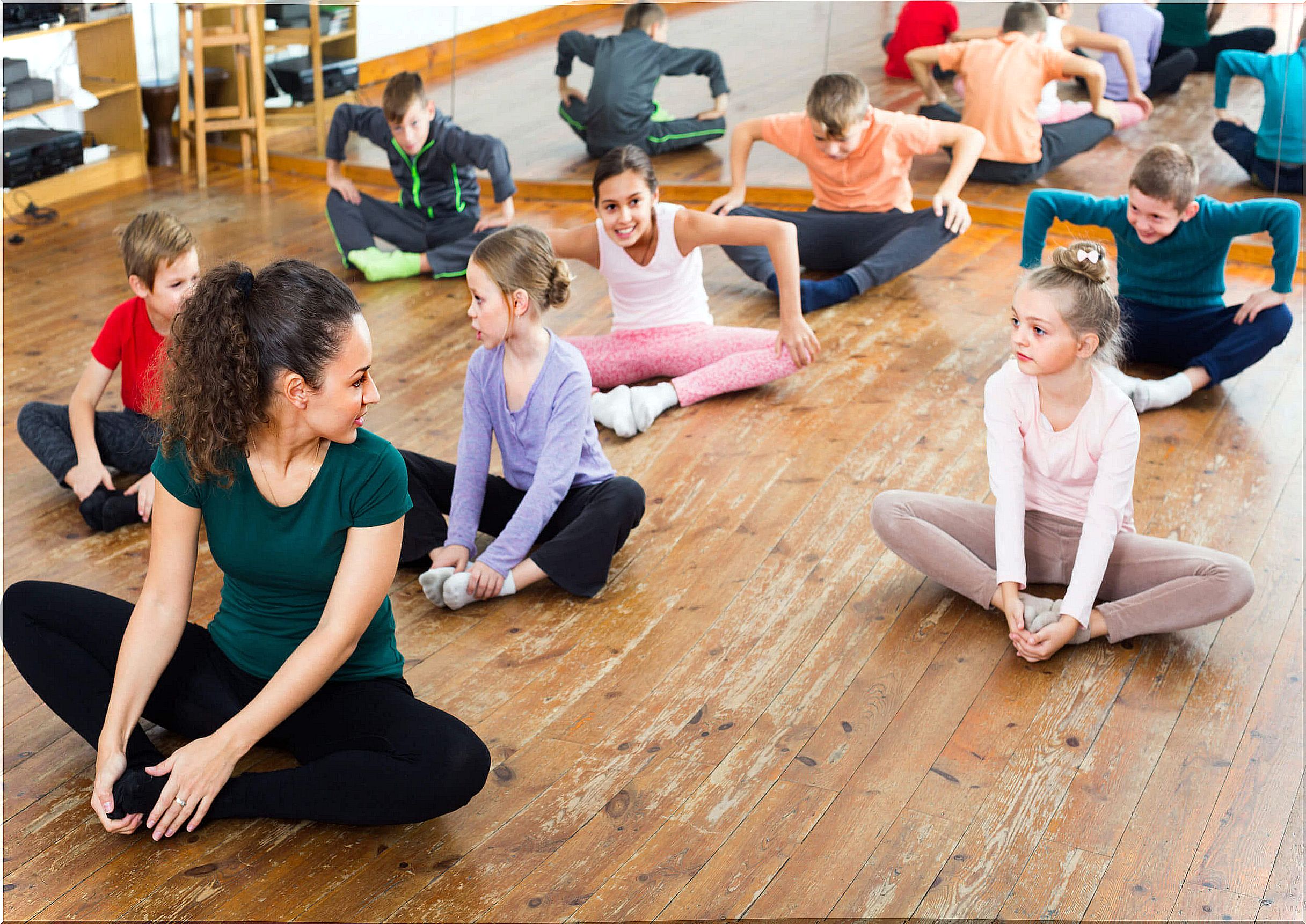The Benefits Of Active Breaks In Classrooms

The body and mind are deeply connected, in such a way that physical state has a strong influence on psychological and emotional health. Children are in the process of development, however, they lead an excessively sedentary life.
They spend at least 6 or 7 hours a day sitting in a chair during the school day. Thus, active breaks in the classrooms arise as a proposal to mitigate the impact of this sedentary lifestyle.
It is true that the academic curriculum includes specific physical education classes several hours a week. In addition, schools often offer various sports among their main extracurricular activities.
Many parents even choose to walk with their children the journeys between home and school in order to increase their exercise. But all these measures are insufficient on many occasions.
Therefore, including physical activity in the school day can be an interesting alternative. This does not require an extra investment of time and helps children integrate sport and movement into their daily lives.

What are active breaks in classrooms?
The active breaks in the classrooms propose to take advantage of different periods of time during the school day to implement physical activity.
It is about taking 5 or 10 minutes to do small exercise sessions. They can take place at any time, but generally take advantage of the breaks between one subject and another. In this way, instead of leaving those minutes free, activities are organized that promote movement and motor skills.
The alternatives are varied and you can choose jumps, races, dances or any other option. In any case, it is recommended that they include a warm-up, a development and a cool down. In this way, these short periods of time activate the body and mind of students who have been sitting for one or several hours.
What are its benefits?
This innovative proposal has been tested in various studies, yielding very promising results. Thus, among the main benefits of these active breaks are the following:
- They increase the total amount of daily physical exercise that students do. Therefore, they reduce sedentary lifestyle and help combat problems such as childhood and youth obesity.
- They improve the physical condition of minors (for example, their abdominal strength and resistance) and, therefore, their health. They can even make it possible to decrease the use of medications for asthma and attention deficit hyperactivity disorder (ADHD).
- They activate the brains of students and have a positive impact on their cognitive functions. That is, they favor concentration, organization, school performance and children’s homework behavior.
- They improve the perception and attitudes of minors towards physical activity. They also increase their knowledge of health and their perceived self-efficacy with regard to physical exercise.
- Active breaks are well received by students. Generally, they claim to enjoy them more than when they are passive and sedentary.

How to implement active breaks in classrooms?
There are several applications with proposals specifically designed for this type of active breaks. For example, gonoodle or sworkit kids are interesting alternatives. These can include warm-up exercises, aerobic physical activity, different dance choreographies, or moments of relaxation. But in reality, each teacher can create and apply their own suggestions.
Active breaks can be done within the classroom itself or using other spaces in the center, such as the corridors or the patio. Going out for a few minutes and changing surroundings can be beneficial. In addition, physical activities can be related to the theme of a specific subject or focus solely on movement.
On the other hand, the most advisable thing would be to take an active break after every hour of sedentary class ; however, this is not always possible. In these cases, taking a single 10-15 minute break dividing the longest class period can also provide very good results.
Finally, the involvement of teachers is essential to be able to put this type of initiative into practice. However, the support of the center and, perhaps, the guidance of physical education teachers is needed. In any case, it is a relatively simple initiative to implement and that can have a very positive impact on both a physical and psychological level.










